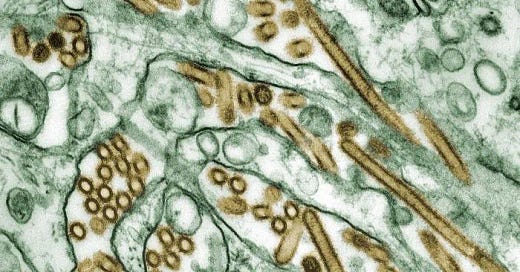Cambodian health ministry officials report on another human H5N1 avian influenza case in 2025.
The Ministry of Health of the Kingdom of Cambodia says a 41-year-old woman residing in Lwek village, Daun Kao commune, Puok district, Siem Reap province tested positive for the H5N1 avian influenza virus by the National Institute of Public Health on June 23, 2025.
The patient has symptoms of fever, cough, shortness of breath, and difficulty breathing. The patient is currently in critical condition and is receiving close medical care. Investigations revealed that there were sick and dead chickens in the patient’s home and in the homes of neighbors, and the patient had handled the sick and dead chickens and cooked them for consumption 5 days before the patient started feeling sick.
This is the seventh confirmed human case this year in Cambodia. There has been 5 deaths.
The emergency response teams of the national and sub-national ministries of health have been collaborating with the provincial agriculture departments and local authorities at all levels to actively investigate the outbreak of bird flu and respond according to technical methods and protocols, find sources of transmission in both animals and humans, and search for suspected cases and contacts to prevent further transmission in the community. They have also distributed Tamiflu to close contacts and conducted health education campaigns among residents in the affected villages.
The Ministry of Health would like to remind all citizens to always pay attention to and be vigilant about bird flu because H5N1 bird flu continues to threaten the health of our citizens. We would also like to inform you that if you have a fever, cough, sputum discharge, or difficulty breathing and have a history of contact with sick or dead chickens or ducks within 14 days before the start of the symptoms, do not go to gatherings or crowded places and seek consultation and treatment at the nearest health center or hospital immediately. Avoid delaying this, which puts you at high risk of eventual death.





